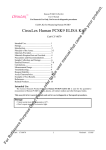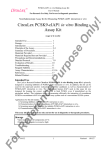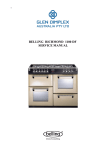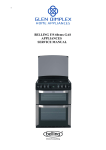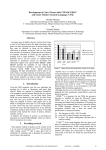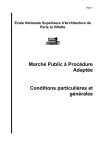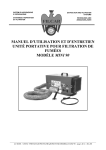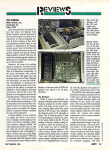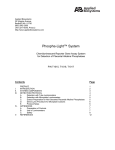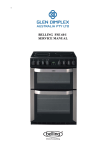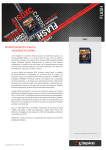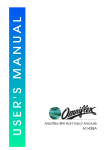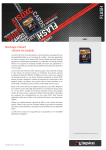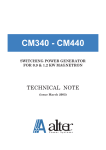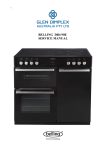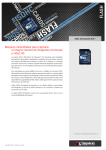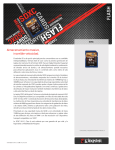Download For Reference Purpose Only!
Transcript
TM PCSK9-LDLR in vitro Binding Assay Kit User’s Manual For Research Use Only, Not for use in diagnostic procedures On Non-Radioisotopic Kit for Measuring PCSK9-LDLR interaction in vitro ly ! CircuLex Cat# CY-8150 en ce Pu rp Intended Use................................................ 1 Storage......................................................... 1 Introduction ................................................. 2 Principle of the Assay.................................. 2-3 Summary of Procedure..................................4 Materials Provided ...................................... 5 Materials Required but not Provided .......... 6 Precautions and Recommendations............. 7 Detailed Protocol......................................... 8-10 Evaluation of Results ................................. 11 Troubleshooting ......................................... 12 Reagent Stability ........................................ 12 Assay Characteristics ..................................13-17 References....................................................18 Related Product............................................19 os e CircuLex PCSK9-LDLR in vitro Binding Assay Kit Intended Use er The CycLex Research Product CircuLex PCSK9-LDLR in vitro Binding Assay Kit is primarily designed to screening inhibitors of PCSK9-LDLR interaction in vitro. In addition, this kit can be used for the rapid and sensitive evaluation of inhibitor candidates as well as characterization of PCSK9-LDLR interaction in vitro. The recombinant LDLR-EGF-AB domain used in this assay kit was specially designed by CycLex for keeping the correct conformation to bind PCSK9, even if immobilized on the microplate surface. This technique allows us measuring efficiently the interaction of recombinant PCSK9 to recombinant LDLR-AB domain in a solid-phase assay system such as a conventional ELISA system. ef Applications for this kit include: 1) Screening inhibitors of PCSK9-LDLR interaction in vitro. 2) Characterization of inhibitor candidates of PCSK9-LDLR interaction in vitro. 3) Screening monoclonal antibody that inhibits PCSK9-LDLR interaction in vitro. 4) Characterization of PCSK9-LDLR interaction in vitro. rR This assay kit is for research use only and not for use in diagnostic or therapeutic procedures. Storage • Upon receipt store all components at 4°C. • Don’t expose reagents to excessive light. Fo Cat#: CY-8150 1 Version#: 120420 TM PCSK9-LDLR in vitro Binding Assay Kit User’s Manual For Research Use Only, Not for use in diagnostic procedures On Introduction ly ! CircuLex Principle of the Assay Pu rp os e PCSK9 (also known as neural apoptosis-regulated convertase, NARC-1) is a 692-residue extracellular protein expressed primarily in the kidneys, liver and intestines (1) representing the 9th member of the secretory subtilase family. Various genetic observations subsequently mapped PCSK9 as the third gene (along with LDLR and APOB) to cause autosomal dominant hypercholesterolemia (ADH). These studies suggested that gain of function mutations increase plasma levels of LDL-c (2–6), whereas nonsense or missense (loss-of-function) mutations, which interfere with folding or secretion of PCSK9, lead to a reduction of plasma levels of LDL-c and an 88% decrease in the risk of coronary heart disease (CHD) (5). In mice, adenoviral overexpression of PCSK9 results in increased plasma LDL-c level in normal mice but not in LDLR-deficient mice (7). Deletion of PCSK9 causes an increase in level of LDLR protein but not mRNA (8). These findings lead to a hypothesis that PCSK9 exerts its role in cholesterol metabolism through posttranslational down-regulation of LDLR, the receptor responsible for clearing LDL-c from plasma. Evidence is consistent with the secreted form of PCSK9 binding directly to the LDLR and resulting in degradation of the receptor (9, 10). Zhang et al. (11) localized the binding site of PCSK9 in the LDLR to the first epidermal growth factor-like repeat (EGF-A) of the extracellular domain and showed that PCSK9 binding to this site is required for LDLR degradation. In light of these observations and the fact that PCSK9 in the circulation may cause the degradation of hepatic LDLR in the liver, PCSK9 would seem to be an attractive drug target for lowering LDLC. rR ef er en ce The CycLex Research Products CircuLex PCSK9-LDLR in vitro Binding Assay Kit is a semi-quantitative solid phase binding assay between recombinant His-tagged PCSK9 and recombinant LDLR-AB domain. Plates are pre-coated with a recombinant LDLR-AB domain, which contains binding site for PCSK9. Biotinylated anti-His-tag monoclonal antibody specifically reacts with recombinant His-tagged PCSK9 that has been trapped with recombinant LDLR-AB domain immobilized on the microplate surface. The CircuLex PCSK9-LDLR in vitro Binding Assay Kit may be used to characterize PCSK9-LDLR interaction as well as to screening inhibitors of PCSK9-LDLR interaction in vitro. To perform the test, the recombinant His-tagged PCSK9 is diluted in Reaction Buffer, pipetted into the wells and allowed to bind recombinant LDLR-AB domain immobilized on the wells. After wash the plate, the amount of bound recombinant His-tagged PCSK9 is measured by binding it with biotinylated anti-His-tag monoclonal antibody, followed by binding with horseradish peroxidase conjugated Streptavidin, which then catalyzes the conversion of the chromogenic substrate tetra-methylbenzidine (TMB) from a colorless solution to a blue solution (or yellow after the addition of stopping reagent). The color is quantitated by spectrophotometry and reflects the relative amount of recombinant His-tagged PCSK that binds to recombinant LDLR-AB on the microplate. For screening inhibitors of PCSK9-LDLR interaction in vitro, test compounds or the inhibitor candidates including monoclonal antibody is added to appropriate amount of His-tagged PCSK9 in the wells that have been coated with recombinant LDLR-AB domain in a similar fashion as described above, followed by evaluation of inhibitory effect on PCSK9-LDLR interaction by measuring the amount of His-tagged PCSK9 on the wells. Fo Cat#: CY-8150 2 Version#: 120420 TM PCSK9-LDLR in vitro Binding Assay Kit User’s Manual For Research Use Only, Not for use in diagnostic procedures ly ! CircuLex rp os e On Schematic Representation of the CircuLex PCSK9-LDLR in vitro Binding Assay Kit Principle wash Pu wash : Biotinylated anti-His-tag mAb en ce : LDLR-EGF-AB : His-tagged PCSK9 : HRP-conjugated Streptavidine rR ef er : TMB Fo Cat#: CY-8150 3 Version#: 120420 PCSK9-LDLR in vitro Binding Assay Kit User’s Manual For Research Use Only, Not for use in diagnostic procedures Summary of Procedure ly ! TM On CircuLex Add 100 µL of recombinant His-tagged PCSK9 to the wells Incubate for 2 hrs at room temp. os e Wash the wells Add 100 µL of biotinylated Anti-His-tag monoclonal Antibody. Incubate for 1 hr at room temp. Wash the wells rp Add 100 µL of HRP conjugated Streptavidin Incubate for 20 min at room temp. Pu Wash the wells Add 100 µL of Substrate Reagent Add 100 µL of Stop Solution rR ef er en ce Measure absorbance at 450 nm Fo Cat#: CY-8150 4 Version#: 120420 TM PCSK9-LDLR in vitro Binding Assay Kit User’s Manual For Research Use Only, Not for use in diagnostic procedures On Materials Provided ly ! CircuLex All samples should be assayed in duplicate. The following components are supplied and are sufficient for the one 96-well microtiter plate kit. os e Microplate: One microplate supplied ready to use, with 96 wells (12 strips of 8-wells) in a foil, zip-lock bag with a desiccant pack. Wells are coated with Recombinant LDL-EGF-AB domain. Recombinant His-tagged PCSK9 wild type: One vial containing 1.2 µg of lyophilized recombinant His-tagged PCSK9 wild type. rp 150X Biotinylated anti-His-tag monoclonal antibody: One vial containing 100 µL of 150X Biotinylated anti-His-tag monoclonal antibody. For long term storage, unused 150X Biotinylated anti-His-tag monoclonal antibody solution can be stored in small aliquots (e.g. 20 µL) at below -70°C to avoid repeated freezing and thawing. Reaction Buffer: One bottle containing 50 mL of 1X buffer; used for binding reaction and dilution of Recombinant His-tagged PCSK9 wild type. Ready to use. Pu 150X HRP-conjugated Streptavidin: One vial containing 100 µL of 150X HRP-conjugated Streptavidin. For long term storage, unused 150X HRP-conjugated Streptavidin solution can be stored in small aliquots (e.g. 20 µL) at below -70°C to avoid repeated freezing and thawing. Conjugate Dilution Buffer: One bottle containing 30 mL of 1X buffer; used for dilution of HRP-conjugated Streptavidin. Ready to use en ce 10X Wash Buffer: One bottle containing 100 mL of 10X buffer containing 2%Tween®-20 Substrate Reagent: One bottle containing 20 mL of the chromogenic substrate, tetra methylbenzidine (TMB). Ready to use. rR ef er Stop Solution: One bottle containing 20 mL of 1 N H2SO4. Ready to use. Fo Cat#: CY-8150 5 Version#: 120420 TM PCSK9-LDLR in vitro Binding Assay Kit User’s Manual For Research Use Only, Not for use in diagnostic procedures On Materials Required but not Provided ly ! CircuLex • Pipettors: 2-20 µL, 20-200 µL and 200-1000 µL precision pipettors with disposable tips. • Precision repeating pipettor • Wash bottle or multichannel dispenser for plate washing. • Microcentrifuge and tubes for sample preparation. • Vortex mixer os e • Orbital microplate shaker rp • Microplate washer: optional (Manual washing is possible but not preferable) Pu • Plate reader capable of measuring absorbance in 96-well plates at dual wavelengths of 450 nm/540 nm. Dual wavelengths of 450/550 or 450/595 nm can also be used. The plate can also be read at a single wavelength of 450 nm, which will give a somewhat higher reading. • Software package facilitating data generation and analysis :optional • 500 or 1000 mL graduated cylinder • Reagent reservoirs en ce • Deionized water of the highest quality rR ef er • Disposable paper towels Fo Cat#: CY-8150 6 Version#: 120420 PCSK9-LDLR in vitro Binding Assay Kit User’s Manual For Research Use Only, Not for use in diagnostic procedures Precautions and Recommendations • Allow all the components to come to room temperature before use. ly ! TM On CircuLex • All microplate strips that are not immediately required should be returned to the zip-lock pouch, which must be carefully resealed to avoid moisture absorption. os e • Do not use kit components beyond the indicated kit expiration date. • Use only the microtiter wells provided with the kit. • Rinse all detergent residue from glassware. • Use deionized water of the highest quality. rp • Do not mix reagents from different kits. Pu • The buffers and reagents used in this kit contain either sodium Kathon-CG as preservatives. Care should be taken to avoid direct contact with these reagents. • Do not mouth pipette or ingest any of the reagents. • Do not smoke, eat, or drink when performing the assay or in areas where samples or reagents are handled. en ce • Dispose of tetra-methylbenzidine (TMB) containing solutions in compliance with local regulations. rR ef er • CAUTION: Sulfuric Acid is a strong acid. Wear disposable gloves and eye protection when handling Stop Solution. Fo Cat#: CY-8150 7 Version#: 120420 TM PCSK9-LDLR in vitro Binding Assay Kit User’s Manual For Research Use Only, Not for use in diagnostic procedures On Detailed Protocol ly ! CircuLex os e The CycLex Research Product CircuLex PCSK9-LDLR in vitro Binding Assay Kit is provided with removable strips of wells so the assay can be carried out on separate occasions using only the number of strips required for the particular determination. Since conditions may vary, individual user should optimize the amount of Recombinant His-tagged PCSK9 wild type for inhibitor screening from dose-response curve. Disposable pipette tips and reagent troughs should be used for all transfers to avoid cross-contamination of reagents or samples. Preparation of Working Solutions 1. Prepare a working solution of Wash Buffer by adding 100 mL of the 10X Wash Buffer (provided) to 900 mL of deionized water. Mix well. Store at 4°C for two weeks or -20°C for long-term storage. Pu rp 2. Reconstitute the Recombinant His-tagged PCSK9 wild type with 1.2 mL of ddH2O. After dissolved by gently mixing, immediately dispense in small aliquots (e.g. 200 µL) to micro-centrifuge tubes and store at below -70°C to avoid repeated freezing and thawing. Final concentration of recombinant His-tagged PCSK9 wild type solution should be 1 µg/mL, which is referred as a Master solution of Recombinant His-tagged PCSK9 wild type. 3. Prepare His-tagged PCSK9 wild type Solutions by 2-fold serially diluting the Master solution (1 µg/mL) to an appropriate concentration (usually 100-1.56 ng/mL only for drawing dose-response curve)* with Reaction Buffer (See the section “Standard Assay for Drawing Dose-Response Curve” in page 9) at the time of assay**. en ce 4. Prepare 1X Biotinylated anti-His-tag monoclonal antibody by diluting the 150X Biotinylated anti-His-tag monoclonal antibody solution 150-fold with Conjugate Dilution Buffer at the time of assay**. 5. Prepare 1X HRP-conjugated Streptavidin by diluting the 150X HRP-conjugated Streptavidin solution 150-fold with Conjugate Dilution Buffer at the time of assay**. * For an inhibitor screening assay, the Master solution (2 µg/mL) should be diluted with Reaction Buffer to appropriate concentration, which shows OD value does not exceed plateau range in dose-response curve. rR ef er ** Prepare appropriate volume for your assay. Discard any unused Recombinant His-tagged sRAGE Solutions, 1X Biotinylated anti-His-tag monoclonal antibody and 1X HRP-conjugated Streptavidin after diluted. Fo Cat#: CY-8150 8 Version#: 120420 TM PCSK9-LDLR in vitro Binding Assay Kit User’s Manual For Research Use Only, Not for use in diagnostic procedures On Standard Assay for Drawing Dose-Response Curve ly ! CircuLex 1. Remove the appropriate number of microtiter wells from the foil pouch and place them into the well holder. Return any unused wells to the foil pouch, refold, seal with tape and store at 4°C. os e 2. Prepare 2-fold serially diluted His-tagged PCSK9 wild type Solutions (100-1.56 ng/mL and Reaction Buffer only). 3. Pipette 100 µL of the His-tagged PCSK9 wild type Solutions (100-1.56 ng/mL and Reaction Buffer only) in duplicates, into the wells. Cover with plate sealer or lid, and incubate at room temperature (ca.25°C) for 2 hours, shaking at ca. 300 rpm on an orbital microplate shaker. rp 4. Wash 4-times by filling each well with Wash Buffer (350 µL) using a squirt bottle, multi-channel pipette, manifold dispenser or microplate washer. Remove residual Wash Buffer by gentle tapping or aspiration. 7. Wash 4-times as same as in step 4. Pu 6. Add 100 µL of 1X Biotinylated anti-His-tag monoclonal antibody into each well, cover with plate sealer or lid, and incubate at room temperature (ca.25°C) for 1 hour, shaking at ca. 300 rpm on an orbital microplate shaker. 8. Add 100 µL of 1X HRP-conjugated Streptavidin into each well, cover with plate sealer or lid, and incubate at room temperature (ca.25°C) for 20 minutes, shaking at ca. 300 rpm on an orbital microplate shaker. en ce 9. Wash 4-times as same as in step 4. 10. Add 100 µL of Substrate Reagent into each well. Avoid exposing the microtiter plate to direct sunlight. Covering the wells with e.g. aluminum foil is recommended. Return Substrate Reagent to 4°C immediately after the necessary volume is removed. 11. Incubate the wells at room temperature (ca.25°C) for 10-20 minutes, shaking at ca. 300 rpm on an orbital microplate shaker. (Appropriate incubation time may vary, and incubation time can be extended up to 30 minutes if the reaction temperature is below than 20°C). er 12. Add 100 µL of Stop Solution to each well in the same order as the previously added Substrate Reagent. ef 13. Measure absorbance in each well using a spectrophotometric plate reader at dual wavelengths of 450/540 nm. Dual wavelengths of 450/550 or 450/595 nm can also be used. Read the plate at 450 nm if only a single wavelength can be used. Wells must be read within 30 minutes of adding the Stop Solution. rR Note-1: Complete removal of liquid at each step is essential to good performance. After the last wash, remove any remaining Wash Buffer by aspirating or decanting. Invert the plate and blot it against clean paper towels. Note-2: Reliable signals are obtained when either O.D. values do not exceed 0.25 units for the blank (Reaction Buffer only), or 3.0 units for the 100 ng of His-tagged PCSK9 wild type Solution. Fo Cat#: CY-8150 9 Version#: 120420 TM PCSK9-LDLR in vitro Binding Assay Kit User’s Manual For Research Use Only, Not for use in diagnostic procedures On Standard Assay for Inhibitor Screening ly ! CircuLex os e Special considerations when screening inhibitors of PCSK9-LDLR interaction In order to estimate the inhibitory effect on PCSK9-LDLR interaction in the test compounds correctly, it is necessary to conduct the control experiment of “Vehicle Control” at least once for every experiment, in addition to “Test Compound”, as indicated in the following table. When test compounds cause an inhibitory effect on PCSK9-LDLR interaction, the level of A450 is weakened as compared with “Vehicle Control”. Test Compound Vehicle Control 85 µL 85 µL 5 µL - rp For inhibitor screening Assay Reagents - 5 µL 10 µL 10 µL Reaction buffer 20X Test Compound(s) Vehicle for 20X Test Compound 10X His-tagged PCSK9 wild type Solution * Pu * 10x concentrated solution of the His-tagged PCSK9 wild type Solution, which shows OD value does not exceed plateau range in dose-response curve. (Usually 500-750 ng/mL; see below): See the section “I. Preparation of Working Solutions” in page8. 1. Following the above table, add the “Reaction buffer” and “20X Test compound” or “Vehicle for 20X Test compound” to each well of the microplate. en ce 2. Initiate reaction by adding 10 µL of “10X His-tagged PCSK9 wild type Solution” to each well and mixing thoroughly. Cover with plate sealer or lid, and incubate at room temperature for 2 hours, shaking at ca. 300 rpm on an orbital microplate shaker. 3. Follow the steps 4-13 of “II. Standard Assay for Drawing Dose-Response Curve” in page 9. er Note-1: The optimal experimental conditions must be determined by the individual user. Especially, appropriate concentration of 10X His-tagged PCSK9 wild type Solution must be determined by drawing dose-response curve, which shows OD value does not exceed plateau range in the dose response curve. Note-2: To obtain an accurate inhibition percentage of test compounds, draw a dose-response curve with appropriate serial dilutions of 10X His-tagged PCSK9 wild type Solution in parallel with the inhibition assay of the test compounds. rR ef NOTE: THE ABOVE PROCEDURES ARE INTENDED ONLY AS A GUIDELINE. THE OPTIMAL EXPERIMENTAL CONDITIONS WILL VARY DEPENDING ON THE PARAMETERS BEING INVESTIGATED. NO WARRANTY OR GUARANTEE OF PERFORMANCE USING THESE PROCEDURES IS MADE OR IMPLIED. Fo Cat#: CY-8150 10 Version#: 120420 TM PCSK9-LDLR in vitro Binding Assay Kit User’s Manual For Research Use Only, Not for use in diagnostic procedures On Evaluation of Results ly ! CircuLex To obtain an accurate inhibition percentage of test compounds, it’s required to draw and calculate form a dose-response curve with serial dilutions of 10X His-tagged sRAGE Solution in parallel with the inhibition assay of the test compounds. os e 1. Average the duplicate readings for each “Test Compound”, “Vehicle Control” and “serial dilutions of 10X His-tagged sRAGE Solution”. The absorbance value for “Vehicle Control” should be greater than 1.0 with a background less than 0.25 when using Reaction buffer. 2. Inhibition percentage of test compounds should be calculated from the dose-response curve. rp 3. The dose-response curve of this assay fits to a sigmoidal four-parameter logistic equation. The results of unknown samples can be calculated with any computer program having a four-parameter logistic function. It is important to make an appropriate mathematical adjustment to accommodate for inhibition percentage. Pu 4. Most microtiter plate readers perform automatic calculations of analyte concentration. The calibration curve is constructed by plotting the absorbance (Y) of calibrators versus log of the known concentration (X) of calibrators, using the four-parameter function. Alternatively, the logit log function can be used to linearize the calibration curve (i.e. logit of absorbance (Y) is plotted versus log of the known concentration (X) of calibrators). rR ef er en ce Note: The CycLex Research Product CircuLex PCSK9-LDLR in vitro Binding Assay Kit has been shown to measure PCSK9-LDLR interaction in vitro. The assay may be used to screening and characterize inhibitors of PCSK9-LDLR interaction in vitro. Please consider whether your experimental condition is appropriate by drawing a direct line with the results of “Assay Characteristics” in page 13-17. Fo Cat#: CY-8150 11 Version#: 120420 TM PCSK9-LDLR in vitro Binding Assay Kit User’s Manual For Research Use Only, Not for use in diagnostic procedures On Troubleshooting ly ! CircuLex 1. All samples should be run in duplicate, when a standard assay is being performed, using the protocol described in the “Detailed Protocol”. Incubation times or temperatures significantly different from those specified may give erroneous results. os e 2. Poor duplicates, accompanied by elevated values for wells containing no sample, indicate insufficient washing. If all instructions in the “Detailed Protocol” were followed accurately, such results indicate a need for washer maintenance. 3. Overall low signal may indicate that desiccation of the plate has occurred between the final wash and addition of Substrate Reagent. Do not allow the plate to dry out. Add Substrate Reagent immediately after wash. rp Reagent Stability rR ef er en ce Pu All of the reagents included in the CycLex Research Product CircuLex PCSK9-LDLR in vitro Binding Assay Kit have been tested for stability. Reagents should not be used beyond the stated expiration date. Fo Cat#: CY-8150 12 Version#: 120420 PCSK9-LDLR in vitro Binding Assay Kit User’s Manual For Research Use Only, Not for use in diagnostic procedures TM On Assay Characteristics ly ! CircuLex Fig.1 Typical dose dependent curve of Recombinant His-tagged PCSK9 wild type (pH 6.5) PCSK9-LDLR in vitro Binding Assay os e 3.5 3.0 2.0 1.5 rp A450 2.5 1.0 Pu 0.5 0.0 0 50 100 150 PCSK9-8His conc. (ng/ml) 200 en ce Fig.2 Time course of PCSK9-LDLR binding assay in vitro (80 ng/mL His-tagged PCSK9 wild type was used. PH 7.2) PCSK9-LDLR in vitro Binding Assay 3.5 3.0 2.0 er A450 2.5 1.5 1.0 ef 0.5 0.0 rR 0 Fo Cat#: CY-8150 60 120 180 Reaction Time (min.) 13 240 Version#: 120420 PCSK9-LDLR in vitro Binding Assay Kit User’s Manual For Research Use Only, Not for use in diagnostic procedures TM ly ! CircuLex On Fig.3 Effect of pH on PCSK9-LDLR binding in vitro (80 ng/mL His-tagged PCSK9 wild type was used) PCSK9-LDLR in vitro Binding Assay 3.5 os e 3.0 2.5 A450 2.0 1.5 1.0 rp 0.5 0.0 5.5 6.0 6.5 7.0 pH 7.5 8.0 8.5 9.0 Pu 5.0 Fig.4 Effect of DMSO on PCSK9-LDLR binding in vitro en ce PCSK9-LDLR in vitro Binding Assay 3.0 2.5 A450 2.0 1.5 er 1.0 0.5 ef 0.0 rR 0 Fo Cat#: CY-8150 1 2 3 4 5 DMSO conc. (%) 14 Version#: 120420 TM PCSK9-LDLR in vitro Binding Assay Kit User’s Manual For Research Use Only, Not for use in diagnostic procedures ly ! CircuLex On Fig.5 Effect of calcium ion on PCSK9-LDLR binding in vitro (40 ng/mL His-tagged PCSK9 wild type was used). PCSK9-LDLR in vitro Binding Assay 2.5 os e A450 2.0 1.5 1.0 rp 0.5 0.0 0 100 200 300 400 500 Pu CaCl2 conc. (µM) PCSK9-LDLR in vitro Binding Assay en ce 3.0 2.5 A450 2.0 1.5 1.0 er 0.5 0.0 0.5 1 1.5 2 CaCl2 conc. (mM) rR ef 0 Fo Cat#: CY-8150 15 Version#: 120420 TM PCSK9-LDLR in vitro Binding Assay Kit User’s Manual For Research Use Only, Not for use in diagnostic procedures ly ! CircuLex On Fig.6 Effect of NaCl on PCSK9-LDLR binding in vitro (40 ng/mL His-tagged PCSK9 wild type was used) PCSK9-LDLR in vitro Binding Assay 2.5 os e A450 2.0 1.5 1.0 rp 0.5 0.0 0 250 500 750 1000 Pu NaCl conc. (mM) en ce Fig.7 Effect of BSA on PCSK9-LDLR binding in vitro (40 ng/mL His-tagged PCSK9 wild type was used) PCSK9-LDLR in vitro Binding Assay 2.0 1.0 er A450 1.5 0.5 rR ef 0.0 Fo Cat#: CY-8150 0 0.5 1 1.5 2 2.5 BSA conc. (%) 16 Version#: 120420 PCSK9-LDLR in vitro Binding Assay Kit User’s Manual For Research Use Only, Not for use in diagnostic procedures TM On Fig.8 Binding capability of several recombinant PCSK9s to EGF-AB domain of LDL receptor ly ! CircuLex os e In this experiment, Following recombinant PCSK9 were used; PCSK9 Wild Type in culture medium (Cat# CY-R2310), PCSK9 D374Y in culture medium (Cat# CY-R2311), PCSK9 Wild Type/Δ53 in culture medium (Cat# CY-R2320), PCSK9 D374Y/Δ53 in culture medium (Cat# CY-R2321). PCSK9-LDLR EGF-AB in vitro Binding Assay 3.5 3.0 D374YΔ53 2.0 Wild-type Wild-typeΔ53 1.5 1.0 en ce 0.5 0.0 rp D374Y Pu A450 2.5 1 10 100 PCSK9-8His conc. (ng/ml) 1,000 10,000 rR ef er 0 Fo Cat#: CY-8150 17 Version#: 120420 TM PCSK9-LDLR in vitro Binding Assay Kit User’s Manual For Research Use Only, Not for use in diagnostic procedures On References ly ! CircuLex 1. Seidah NG, Benjannet S, Wickham L, Marcinkiewicz J, Jasmin SB, Stifani S, Basak A, Prat A, Chretien M (2003) Proc Natl Acad Sci USA 100:928–933. os e 2. Abifadel M, Varret M, Rabes JP, Allard D, Ouguerram K, Devillers M, Cruaud C, Benjannet S, Wickham L, Erlich D, et al. (2003) Nat Genet 34:154–156. 3. Leren TP (2004) Clin Genet 65:419–422. 4. Allard D, Amsellem S, Abifadel M, Trillard M, Devillers M, Luc G, Krempf M, Reznik Y, Girardet JP, Fredenrich A, et al. (2005) Hum Mutat 26:497. 5. Cohen JC, Boerwinkle E, Mosley TH, Jr, Hobbs HH (2006) N Engl J Med 354, 1264–1272. rp 6. Berge KE, Ose L, Leren TP (2006) Arterioscler Thromb Vasc Biol 26:1094–1100. 7. Maxwell KN, Breslow JL (2004) Proc Natl Acad Sci USA 101:7100–7105. Pu 8. Rashid S, Curtis DE, Garuti R, Anderson NN, Bashmakov Y, Ho YK, Hammer RE, Moon YA, Horton JD (2005) Proc Natl Acad Sci USA 102:5374–5379. 9. Lagace, T. A., Curtis, D. E., Garuti, R., McNutt, M. C., Park, S. W., Prather, H. B., Anderson, N. N., Ho, Y. K., Hammer, R. E., and Horton, J. D. (2006) J. Clin. Investig. 116, 2995–3005 en ce 10. Cameron, J., Holla, O. L., Ranheim, T., Kulseth, M. A., Berge, K. E., and Leren, T. P. (2006) Hum. Mol. Genet. 15, 1551–1558 rR ef er 11. Zhang, D. W., Lagace, T. A., Garuti, R., Zhao, Z., McDonald, M., Horton, J. D., Cohen, J. C., and Hobbs, H. H. (2007) J. Biol. Chem. 282, 18602–18612 Fo Cat#: CY-8150 18 Version#: 120420 TM PCSK9-LDLR in vitro Binding Assay Kit User’s Manual For Research Use Only, Not for use in diagnostic procedures On Related Products ly ! CircuLex en ce Pu rp os e * CircuLex Mouse/Rat PCSK9 ELISA Kit: Cat# CY-8078 * CircuLex Human PCSK9 ELISA Kit: Cat# CY-8079 * CircuLex PCSK9-LDLR in vitro Binding Assay Kit: Cat# CY-8150 * Anti-Human PCSK9 prodomain monoclonal antibody (KS-3C8): Cat# CY-M1032 * Anti-Human PCSK9 monoclonal antibody (KS-4H12): Cat# CY-M1033 * PCSK9 Wild Type in culture medium: Cat# CY-R2310 * PCSK9 Δ(33-53) / Wild Type in culture medium: Cat# CY-R2320 * PCSK9 D374Y in culture medium: Cat# CY-R2311 * PCSK9 Δ(33-53) / D374Y in culture medium: Cat# CY-R2321 * PCSK9 Wild Type/Δ53 in culture medium: Cat# CY-R2320 * PCSK9 Wild Type: Cat# CY-R2330 * PCSK9 D374Y: Cat# CY-R2331 * PCSK9 R194A: Cat# CY-R2333 * LDLR EGF-AB domain: Cat# CY-R2340 * LDLR EGF-AB domain, Myc-tagged: Cat# CY-R2341 * LDLR EGF-AB domain H306Y: Cat# CY-R2342 * LDLR EGF-AB domain H306Y, Myc-tagged: Cat# CY-R2343 PRODUCED BY er CycLex Co., Ltd. 1063-103 Terasawaoka Ina, Nagano 396-0002 Japan Fax: +81-265-76-7618 e-mail: [email protected] URL: http://www.cyclex.co.jp rR ef CycLex/CircuLex products are supplied for research use only. CycLex/CircuLex products and components thereof may not be resold, modified for resale, or used to manufacture commercial products without prior written approval from CycLex Co., Ltd.. To inquire about licensing for such commercial use, please contact us via email. Fo Cat#: CY-8150 19 Version#: 120420



















